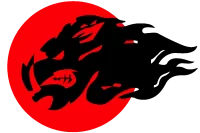BAA Dan Grade Syllabus, effective from October 2019.
| 1st Dan | |
|---|---|
| Time Scale | 1 year consistent practice as 1st Kyu |
| Technique | Randori-no-kata – complete (17). Kihon (basic) Ura Waza – complete (10). Koryu dai Yon – section A (14). Koryu dai San – sections total (24) : suwari waza (4) hanza handachi waza (4) tachi waza (8) tanto dori (8). |
| Application | A minimum of two bouts of tanto hikitategeiko & two bouts of toshu hikitategeiko. |
| 2nd Dan | |
| Time Scale | 2 years consistent practice as 1st Dan |
| Technique | Tanto Randori no Kata – complete (17). Kihon (basic) Ura Waza – complete (10). Koryu dai Yon – complete (25). Koryu dai San – sections total (34): suwari waza (4) hanza handachi waza (4) tachi waza (8) tanto dori (8) tachi dori (5) yari dori (5). |
| Application | A minimum of two bouts of tanto hikitategeiko & two bouts of toshu hikitategeiko. |
| 3rd Dan | |
| Time Scale | 3 years consistent practice as 2nd Dan |
| Technique | Randori no Kata (from katate dori/single wrist grasp) complete (17). Koryu dai Yon – complete (25). Koryu dai San – complete (50). |
| Application | A minimum of two bouts of tanto hikitategeiko & two bouts of toshu hikitategeiko. |
| 4th Dan | |
| Time Scale | 4 years consistent practice as 3rd Dan |
| Technique | Randori no Kata (tanto or toshu) – complete. Koryu dai San – complete (50).Module A Candidates to choose to present one koryu no kata from the following: Koryu dai Ichi. Koryu dai Ni. Koryu dai Go. Koryu dai Roku. Module B
|
| Application | A minimum of two bouts of tanto hikitategeiko & two bouts of toshu hikitategeiko. |
| 5th Dan | |
| Time Scale | 5 years consistent practice as 4th Dan |
| Technique | Randori no Kata (tanto or toshu) – complete. Koryu dai San – complete (50).Module A Candidates to choose to present one koryu no kata from the following, not performed at their previous grading: Koryu dai Ichi. Koryu dai Ni. Koryu dai Go. Koryu dai Roku. Module B
|
| Application | A minimum of two bouts of tanto hikitategeiko & two bouts of toshu hikitategeiko. |
| 6th Dan | |
| Time Scale | 6 years consistent practice as 5th Dan |
| Technique | Randori no Kata (tanto or toshu) – complete. Koryu dai San – complete (50). Module A Candidates to choose to present one koryu no kata from the following, not performed at their previous grading: Koryu dai Ichi. Koryu dai Ni. Koryu dai Go. Koryu dai Roku.Module B Goshin ho: 6th Dan requirement
|
| Application | A minimum of two bouts of tanto hikitategeiko & two bouts of toshu hikitategeiko. |
| 7th Dan | |
| Time Scale | 7 years consistent practice as 6th Dan |
| Technique | Randori no Kata (tanto or toshu) – complete. Koryu dai San – complete (50).Module A Candidates will make a ‘demonstration’ of Tomiki Aikido. Agreed in advance with Technical Committee. Guidance as to technical requirements will be given. Module B
|
| Application | A minimum of two bouts of tanto hikitategeiko & two bouts of toshu hikitategeiko. |
| 8th Dan | |
| Time Scale | 8 years consistent practice as 7th Dan |
| Awarded by the Meritorious and Honorary Awards Committee of the Association.A candidate at this level is appointed for their recognised high level of technical knowledge and practice, their exceptional record of work for the Association and their superlative conduct as an aikido practitioner. The candidate at this level has the entitlement to give a demonstration of their Aikido before the Meritorious and Honorary Awards Committee of the Association, in confirmation of their acceptance of the award. (The time and venue to be arranged with the recipient). |
Two bouts of tanto hikitategeiko which must demonstrate knowledge and application of kaeshi waza (5 atemi waza counter technique, shomen-ate, aigamae-ate, gyakugamae-ate, gedan-ate & ushiro-ate) when in the role of tanto. Toshu must demonstrate the use of combination techniques against tanto.
Two bouts of toshu hikitategeiko which must demonstrate a knowledge and application of the 17 junanahon in combination and as counter technique in its performance
Note
- Koryu dai San alternatively termed Goshin no Kata.
- Koryu dai Yon alternatively termed Nage no Kata.
- Randori no Kata alternatively termed Junanahon (basic 17).
